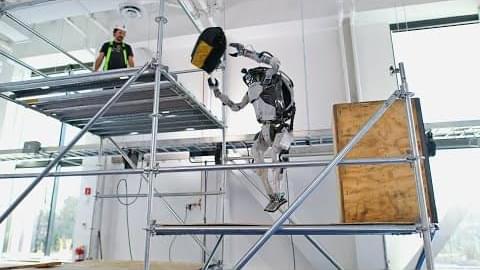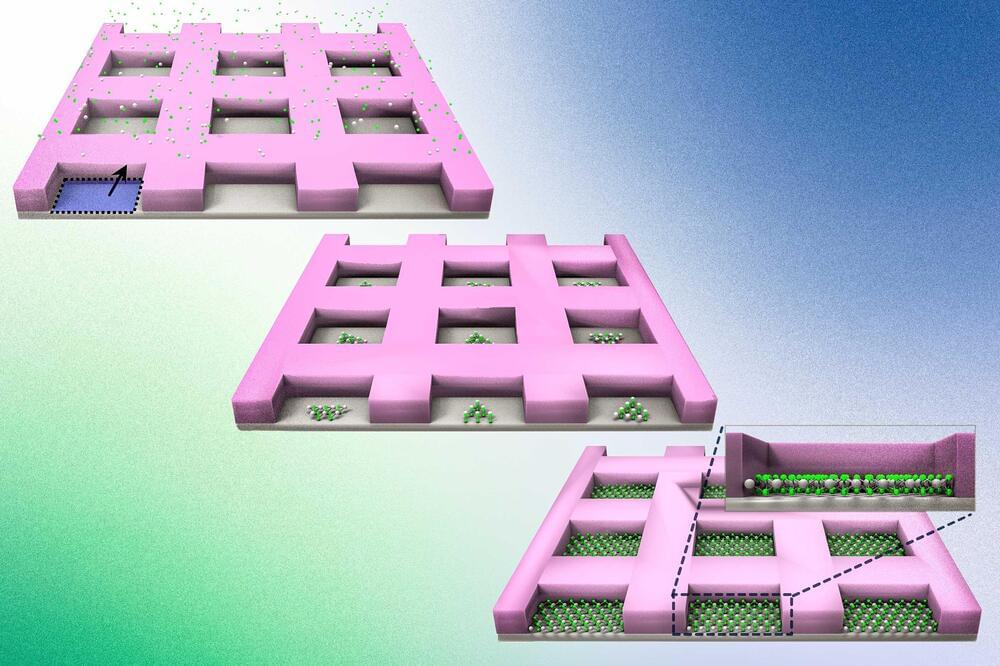Get your eyepatch out: Cyber attacks on the high seas are trending.



Boston Dynamics’ Atlas—the world’s most advanced humanoid robot—is learning some new tricks. The company has finally given Atlas some proper hands, and in Boston Dynamics’ latest YouTube video, Atlas is attempting to do some actual work. It also released another behind-the-scenes video showing some of the work that goes into Atlas. And when things don’t go right, we see some spectacular slams the robot takes in its efforts to advance humanoid robotics.
As a humanoid robot, Atlas has mostly been focused on locomotion, starting with walking in a lab, then walking on every kind of unstable terrain imaginable, then doing some sick parkour tricks. Locomotion is all about the legs, though, and the upper half seemed mostly like an afterthought, with the arms only used to swing around for balance. Atlas previously didn’t even have hands— the last time we saw it, there were only two incomplete-looking ball grippers at the end of its arms.
This newest iteration of the robot has actual grippers. They’re simple clamp-style hands with a wrist and a single moving finger, but that’s good enough for picking things up. The goal of this video is moving “inertially significant” objects—not just picking up light boxes, but objects that are so heavy they can throw Atlas off-balance. This includes things like a big plank, a bag full of tools, and a barbell with two 10-pound weights. Atlas is learning all about those “equal and opposite forces” in the world.

There are around 42,900 new bowel cancer cases in the UK every year Experts have hailed “remarkable” new research which shows that giving chemotherapy before surgery for early-stage bowel cancer cuts the chance of the disease coming back by 28%. The study, funded by Cancer Research UK, suggests at least 5,000 patients in the UK every year could benefit from a tweak to how they receive chemotherapy.

A SpaceX Dragon capsule is being modified on orbit to carry an extra astronaut home to Earth if need be.
On Wednesday (Jan. 18), NASA plans to start moving agency astronaut Frank Rubio’s seat liner from a Russian Soyuz spacecraft over to Endurance, the Dragon spacecraft that’s flying SpaceX’s ongoing Crew-5 mission for NASA.

True to Moore’s Law, the number of transistors on a microchip has doubled every year since the 1960s. But this trajectory is predicted to soon plateau because silicon—the backbone of modern transistors—loses its electrical properties once devices made from this material dip below a certain size.
Enter 2D materials—delicate, two-dimensional sheets of perfect crystals that are as thin as a single atom. At the scale of nanometers, 2D materials can conduct electrons far more efficiently than silicon. The search for next-generation transistor materials therefore has focused on 2D materials as potential successors to silicon.
But before the electronics industry can transition to 2D materials, scientists have to first find a way to engineer the materials on industry-standard silicon wafers while preserving their perfect crystalline form. And MIT engineers may now have a solution.

Researchers from the Andrew and Erna Viterbi Faculty of Electrical and Computer Engineering at the Technion—Israel Institute of Technology have presented the first experimental observation of Cherenkov radiation confined in two dimensions. The results represent a new record in electron-radiation coupling strength, revealing the quantum properties of the radiation.
Cherenkov radiation is a unique physical phenomenon, which for many years has been used in medical imaging and in particle detection applications, as well as in laser-driven electron accelerators. The breakthrough achieved by the Technion researchers links this phenomenon to future photonic quantum computing applications and free-electron quantum light sources.
The study, which was published in Physical Review X, was headed by Ph.D. students Yuval Adiv and Shai Tsesses from the Technion, together with Hao Hu from the Nanyang Technological University in Singapore (today professor at Nanjing university in China). It was supervised by Prof. Ido Kaminer and Prof. Guy Bartal of the Technion, in collaboration with colleagues from China: Prof. Hongsheng Chen, and Prof. Xiao Lin from Zhejiang University.
According to an article by Bloomberg, investors and consumers are losing interest in plant-based meat. Could this be the end?
Not too long ago, it appeared that much of America was willing to join the plant-based beef bandwagon. But, according to various sources, including Bloomberg, plant-based meat may have seen its zenith and is already falling out of favor.
According to Global Citizen, in 2019, plant-based meat accounted for only about 1% of all meat sales nationwide. Still, it appeared that the percentage would rise due to the development of better products, significant infusions of cash into plant-based meat companies, and an initiative by restaurants like Burger King to promote protein.

The method detects all the objects in the room and cancels out the static objects.
Researchers have been working on ways to “see” people without using cameras or expensive LiDAR hardware for years. In 2013, a team of researchers at MIT found a way to use cell phone signals to see through walls. In 2018, another MIT team used WiFi to detect people in another room and translate their movements into walking stick figures. Now, researchers at Carnegie Mellon University and the University of Waterloo are advancing our ability to see through walls using WiFi.
Sauliakas/iStock.
The technology works by sending a low-powered WiFi signal through a wall, which reverberates around the room. It detects all the objects in the room, cancels out the static objects, and when the signal bounces back, uses the reflection of moving objects to generate a radar-like image. It can work through standard drywall, wooden fences, and even concrete walls, though the range and accuracy depend on the type of wall.
It generates energy by forcing the stream to form a vortex.
Without employing any blades, the transportable hydraulic turbine SETUR from Vortex Hydrokinetics serves as a power source. The water source could be rivers, tidal streams, ocean currents, or even canals.
The portable equipment is lightweight as a result of the 3D-printed bladeless hydraulic turbine.
Vortex Hydrokinetics.
As reported by Designboom, the turbine, shaped like an atomic bomb, generates energy by forcing the stream to form a vortex and then using that vortex as a source of current. According to the design team, the cost-effective SETUR can be used both independently and as part of a multi-unit hydropower farm.
With a stylized celebration to celebrate at the end.
Boston Dynamics has done it once again. After demonstrating the extreme capabilities of its bipedal robot, Atlas, flawlessly executing parkour tricks, the company has now released a video where you will fall in love with the robot for doing what one hates the most–climbing down from a high platform or ladder to get the tool you need.
Needless to say, the video is shot inside Boston Dynamics’ controlled facility and results from hours of perspiration and many broken robotic appendages, something we have covered before.
In this vignette, a human is shown working on a high platform and realizes that he has forgotten his tool bag, which happens very often. In a world where a robot like Atlas is indeed at our beck and call, one can ask him to hand over the toolbag, which he does effortlessly.